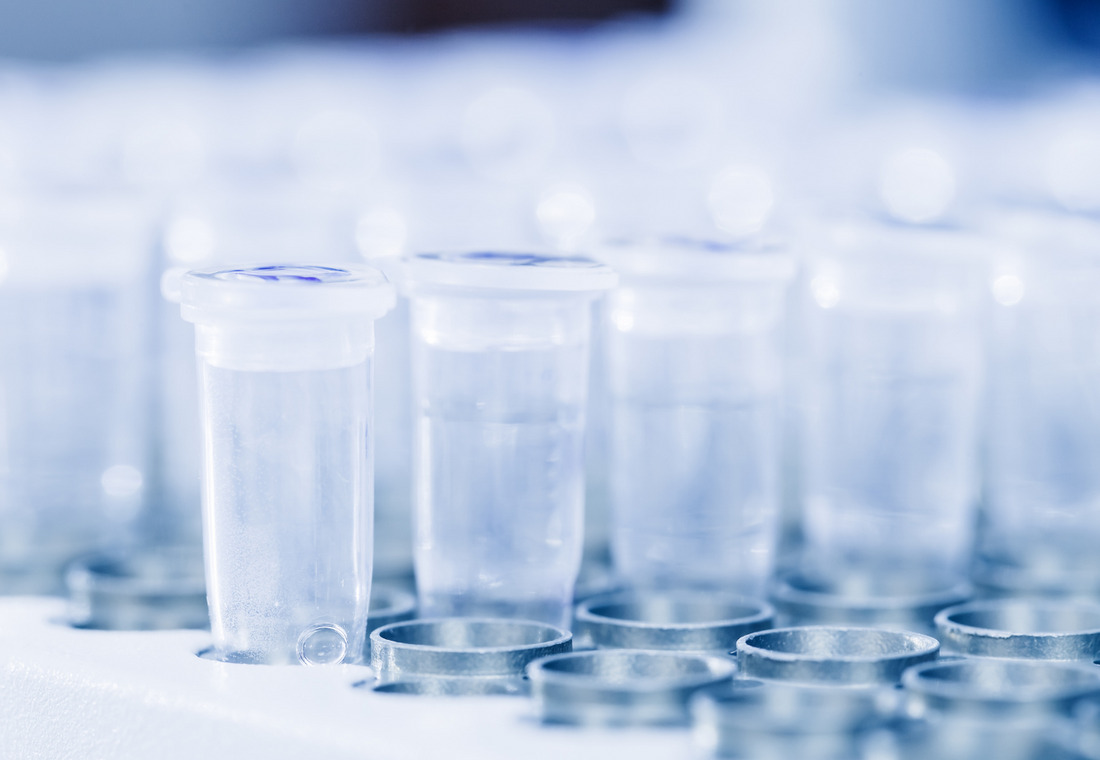
What is done with DNA samples after extraction?
BioCertica Content TeamWritten by: Nermin Đuzić, M.Sc. in Genetics, Content Specialist
In the previous article, you had the opportunity to learn how scientists and lab technicians perform DNA extraction. However, you would probably ask: What is the next step? What happens with DNA after extraction?
Quality evaluation
Usually, after extraction, one should check the quality of extracted DNA, which is done using spectrophotometry or agarose gel electrophoresis. In that sense, we can check the quality of DNA by calculating the concentration, yield, and purity of extracted DNA. Unless you already have some laboratory experience, you may wonder what spectrophotometry is. Let’s define it!
Simply put, spectrophotometry is a method that measures how much a chemical substance can absorb light [1]. Every substance absorbs or transmits light over a specific range of wavelengths. Based on that information, we can determine the composition of the substance. Also, the concentration and purity of proteins and nucleic acid can be easily measured using this approach.
The concentration of the DNA is estimated by measuring the absorbance at 260 nm. The next step is the evaluation of other parameters like the dilution factor. It helps us to determine whether the obtained sample is pure DNA or contains contaminants [2].

In Figure 1 above, you can see all parts of the spectrophotometer and the pathway light has to pass before we determine the absorbance. In this short video, you can learn more about the process of spectrophotometry.
Besides DNA spectrophotometry, electrophoresis is another popular and effective method used widely to examine or analyze extracted samples. We use spectrophotometry to reveal DNA samples’ absorbance, concentration, and purity. On the other hand, we use electrophoresis to separate fragments of nucleic acids or proteins, applying an electric current and electromagnetic field. It helps reveal the size, charge, or binding affinity of molecules of interest [3, 4].
Figure 2 depicts all necessary components of electrophoresis. However, you can learn more by watching this video.

Storage & Management
After our DNA successfully passes all necessary quality checks, we may use it immediately for genotyping or store it for later use. To achieve the best results in the mainstream application, extracted DNA samples must be fully preserved and stored under conditions that limit degradation.
Samples are usually stored in buffers with a pH above 8.5. Buffers are solutions used to maintain the pH of the solution relatively stable. They can resist the pH change due to the addition of acidic or basic components.
Here we use buffers with a basic pH value (above 7). We do so because we want to minimize DNA degradation caused by the breakdown of hydrogen bonds between nucleotide bases. However, DNA degradation may happen even under ideal conditions. Finally, samples are stored at -20℃, and repeated freezing and thawing of DNA should be avoided [5].
We should keep the sample safe and away from contamination with deoxyribonuclease (DNase) and heavy metals. They will both boost degradation. Human skin is the most frequent source of contamination as it contains DNase, a DNA-degrading enzyme.
Even very low concentrations of DNAse at short exposure may result in substantial sample degradation. Therefore, it is recommended to avoid any contact between samples and fingers by either using sterilized solutions and tubes or wearing gloves [6].
On the other hand, heavy metals promote the decay of DNA molecules. Therefore, storage buffers contain EDTA (ethylenediaminetetraacetic acid). EDTA is a metal chelator, which binds metals to itself and eliminates their negative effect on DNA [6].
Samples are stored until the application in genotyping, which compares the genetic makeup of the sample of interest to the reference database and finds differences. More on that in the following article. Stay tuned.
References
-
Morris, R. (2015). Spectrophotometry. Current Protocols Essential Laboratory Techniques, 11(1), 2-1.
-
Vo, K. (2015, July 22). Spectrophotometry. Retrieved from 2.1.5: Spectrophotometry - Chemistry LibreTexts
-
Metzker, M. L. (2005). Emerging technologies in DNA sequencing. Genome Research, 15(12), 1767-1776.
-
Johansson, B. G. (1972). Agarose gel electrophoresis. Scandinavian Journal of Clinical and Laboratory Investigation, 29(sup124), 7-19.
-
DNA Extraction from Buccal Swabs. Retrieved from DNA Extraction from Buccal Swabs | Thermo Fisher Scientific - BA
-
Surzycki, S. (2012). Basic techniques in molecular biology. Springer Science & Business Media.



